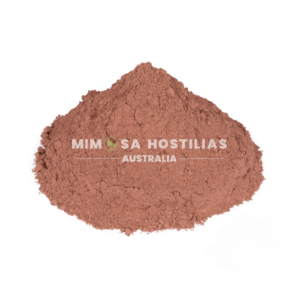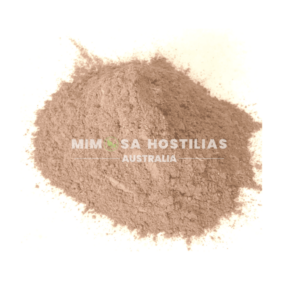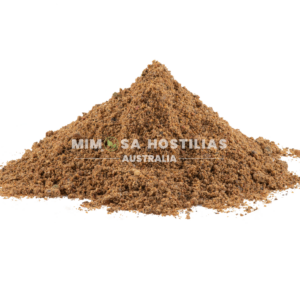What is Acacia Obtusifolia Root Bark?
Acacia Obtusifolia, commonly known as the Blunt-leaf Wattle or Stiff-leaf Wattle, is a fascinating plant species that belongs to the Acacia genus, which encompasses numerous flowering plants in the legume family, Fabaceae. It’s also closely related to Acacia Longifolia, another species of Acacia native to southeastern Australia.
Characterised by its unique foliage and distinctive flowers, Acacia Obtusifolia is native to Australia, where it thrives in a variety of environments, from coastal regions to arid inland areas.
Acacia Obtusifolia Root Bark has long captured the attention of botanists, herbalists, and nature enthusiasts due to its diverse range of characteristics and potential applications.
Characteristics
Acacia Obtusifolia is renowned for its distinctive features, making it easily identifiable in its natural habitat. The plant typically reaches a height of three to eight meters, with a spreading, often irregular, crown.
Its leaves are a key characteristic, as they’re bipinnate and feathery, with small, blunt-tipped leaflets. The young foliage is a vibrant green, providing a striking contrast to the mature leaves.
The flowers of Acacia Obtusifolia are small and spherical, displaying a spectrum of colours, ranging from pale yellow to bright golden hues. These blooms are not only aesthetically pleasing but also contribute to the plant’s ecological significance. You can typically see these golden flowers from December through February.
Distribution
Acacia Obtusifolia is indigenous to various regions of Australia, showcasing its adaptability to diverse climates and soils. The species is commonly found along the eastern and southeastern parts of the continent, including New South Wales, Queensland, and Victoria.
Its ability to thrive in different ecological niches, from coastal plains to mountainous terrains, underscores the resilience of Acacia Obtusifolia. The plant’s distribution also highlights its ecological role, providing habitat and sustenance for local fauna.
Some populations of Acacia Obtusifolia can survive snow and temperatures as low as −6 °C, but the trees in frost-free ranges, such as the coast, are more likely to be killed by temperatures lower than −3 °C. This means you won’t really find Acacia Obtusifolia in colder areas of Australia, like Tasmania.
Uses
- Cultural and Indigenous Uses:
Acacia Obtusifolia holds cultural significance for Indigenous Australian communities. Historically, various parts of the plant, such as the seeds, gum, and bark, were utilised for traditional medicinal practices, tools, and ceremonies. The rich cultural heritage associated with Acacia Obtusifolia underscores its importance beyond its botanical characteristics. - Horticulture and Landscaping:
Given its aesthetic appeal, Acacia Obtusifolia is often cultivated for ornamental purposes in gardens and public spaces. The plant’s vibrant foliage and attractive flowers contribute to landscaping projects, enhancing the visual appeal of outdoor environments. - Ecological Importance:
Acacia Obtusifolia plays a crucial role in maintaining ecological balance. Its nitrogen-fixing capabilities enhance soil fertility, benefiting neighbouring plant species. Additionally, the plant provides food and shelter for a variety of insects, birds, and small mammals, contributing to the overall biodiversity of its habitat. - Psychoactive Uses:
Notably, Acacia Obtusifolia contains psychoactive compounds, including dimethyltryptamine (DMT) and other alkaloids. While these substances have sparked interest in certain spiritual and alternative communities, it’s important to note that the plant’s psychoactive properties should be approached with caution and respect for local laws and regulations. - Medicinal Uses:
In addition to its psychoactive potential, Acacia Obtusifolia has been traditionally used for its medicinal properties, with extracts and infusions believed to possess antibacterial and anti-inflammatory qualities. So, Indigenous Australians use the bark, leaves, and roots to treat ailments like headaches, fevers, and skin infections. - Crafting and Woodworking:
Although not as prominent as some of the other Acacia species, Acacia Obtusifolia can be used for small-scale crafting and woodworking. Some people also use the reddish-brown bark as a natural dye or colourant in projects like soap-making. - Eating and Drinking:
Many people eat the seeds that come from Acacia Obtusifolia by roasting them or grounding them into flour to use in other recipes. You can also boil the bark in hot water to create an energy-boosting tea.
Benefits of Acacia Obtusifolia Root Bark?
- Erosion Control:
The extensive root system of Acacia Obtusifolia makes it effective in preventing soil erosion. This quality is particularly valuable in regions prone to erosion, where the plant acts as a natural stabiliser, protecting the landscape and preserving topsoil. - Biodiversity Enhancement:
Acacia Obtusifolia contributes to the enhancement of biodiversity by providing habitat and sustenance for various wildlife species. Its presence in ecosystems promotes a healthy balance, supporting the interconnected web of life in its native environment. - Soil Improvement:
As a nitrogen-fixing plant, Acacia Obtusifolia improves soil fertility by converting atmospheric nitrogen into a form that can be utilised by other plants. This process enhances the overall health of the soil, promoting the growth of neighbouring vegetation. - Cultural Connection:
Beyond its ecological benefits, Acacia Obtusifolia fosters a cultural connection between Indigenous communities and the land. The plant’s historical uses and significance in traditional practices contribute to the preservation of cultural heritage and knowledge.
Conclusion
Acacia Obtusifolia is a botanical marvel, embodying the rich biodiversity and cultural heritage of Australia. From its distinctive characteristics to its diverse applications, this plant has woven itself into the fabric of ecosystems and human societies alike.
As we continue to explore and appreciate the wonders of nature, understanding and respecting the role of plants like Acacia Obtusifolia becomes paramount. Whether admired for its ornamental beauty, ecological contributions, or historical significance, the Blunt-leaf Wattle serves as a testament to the interconnectedness of the natural world and the intricate relationships between flora, fauna, and humanity.





Thank you, recieved product in 2 days!